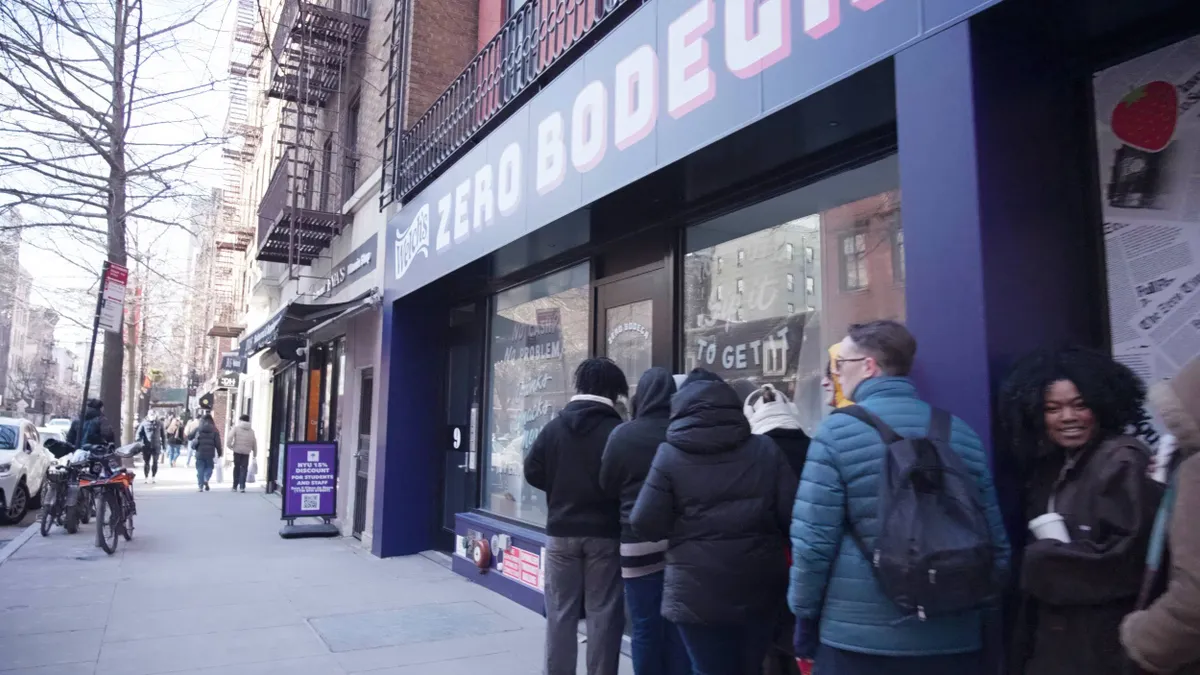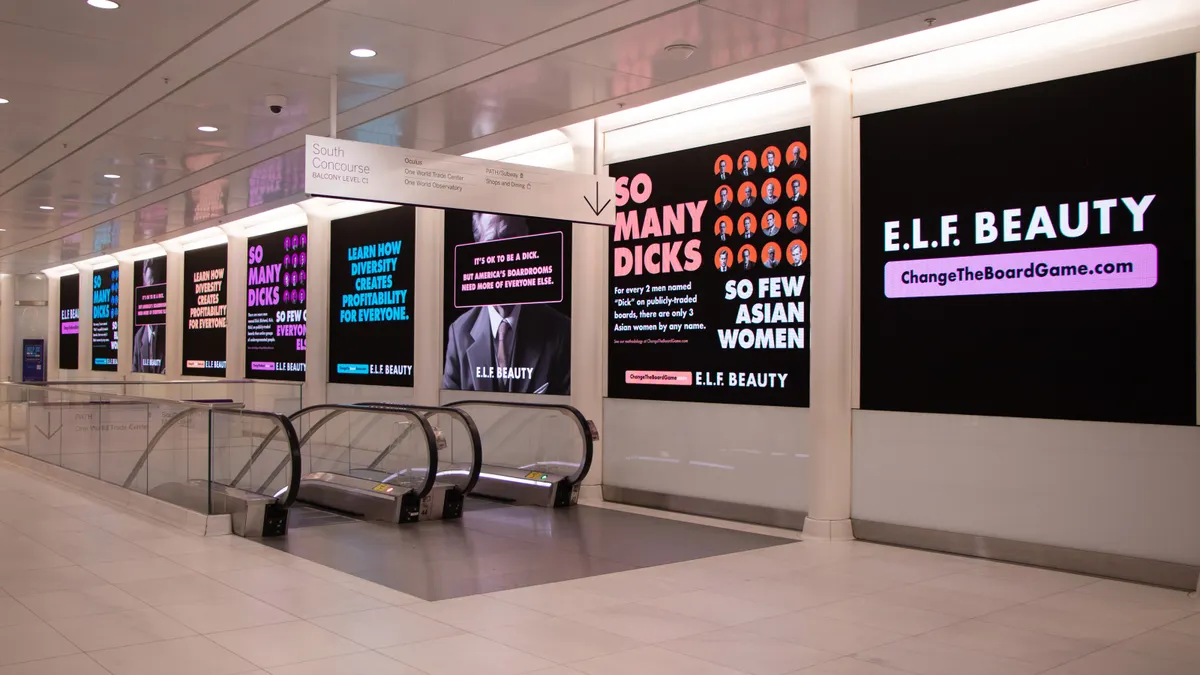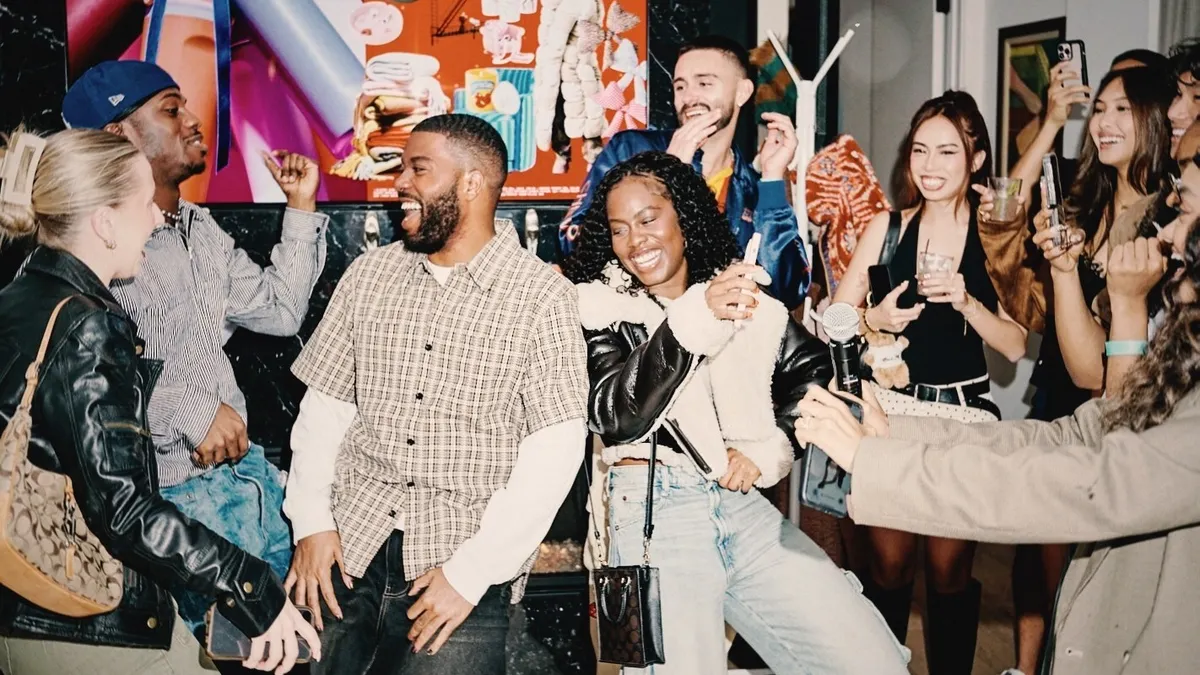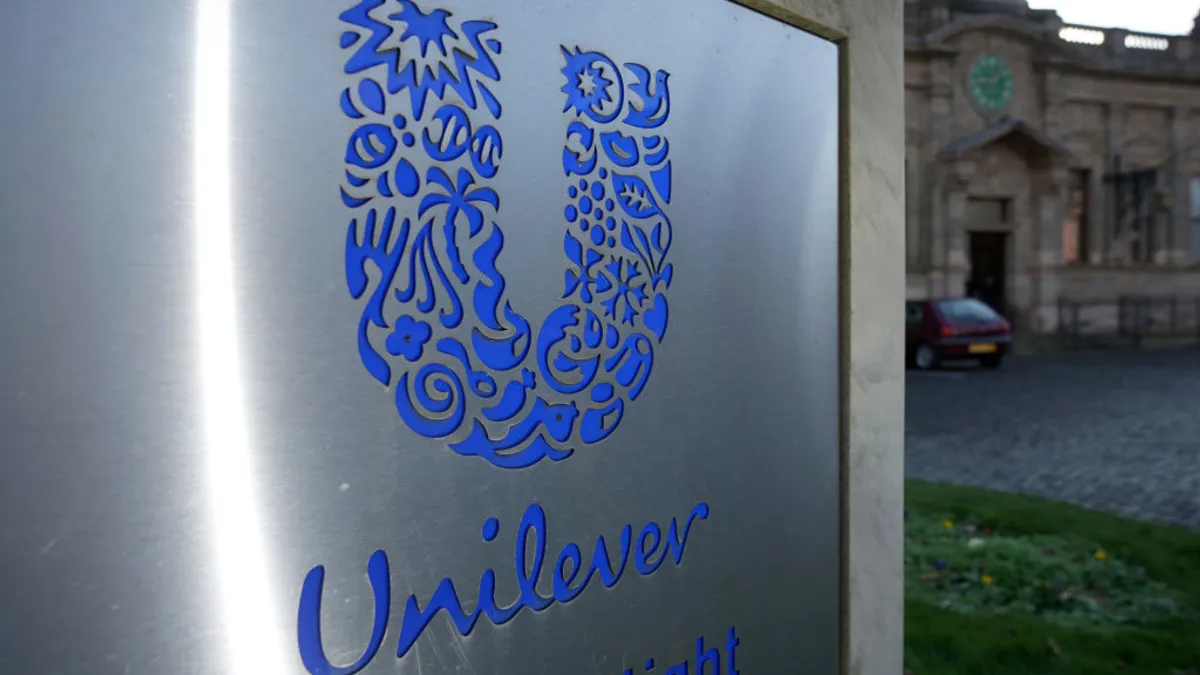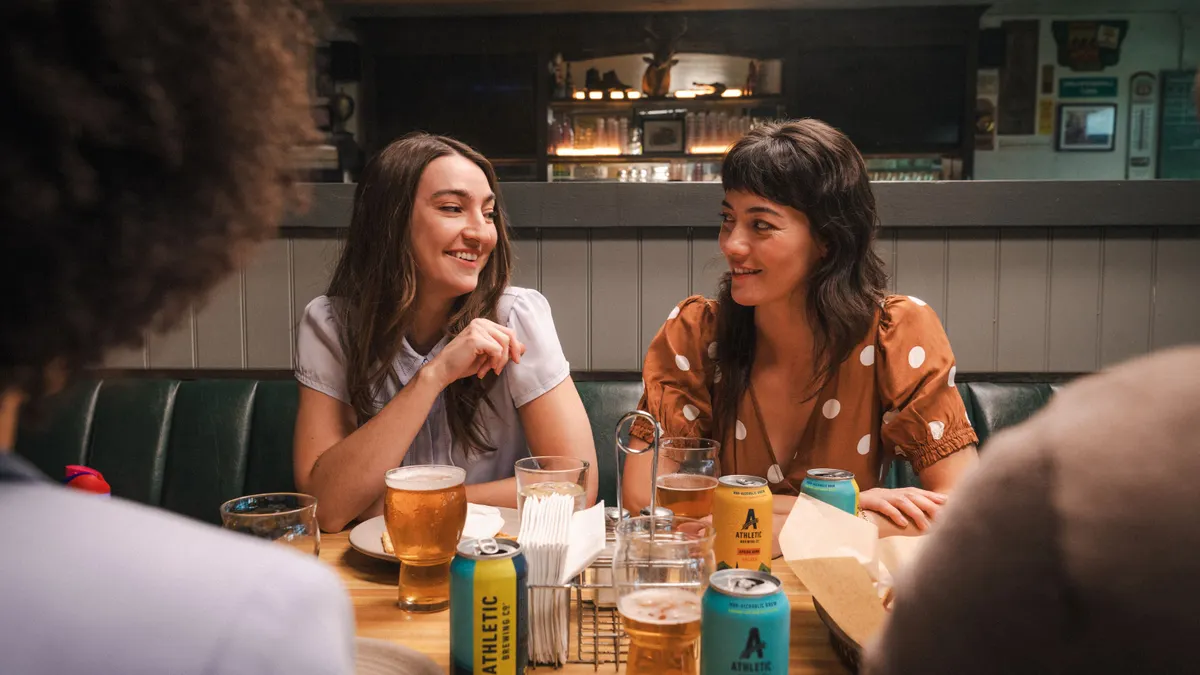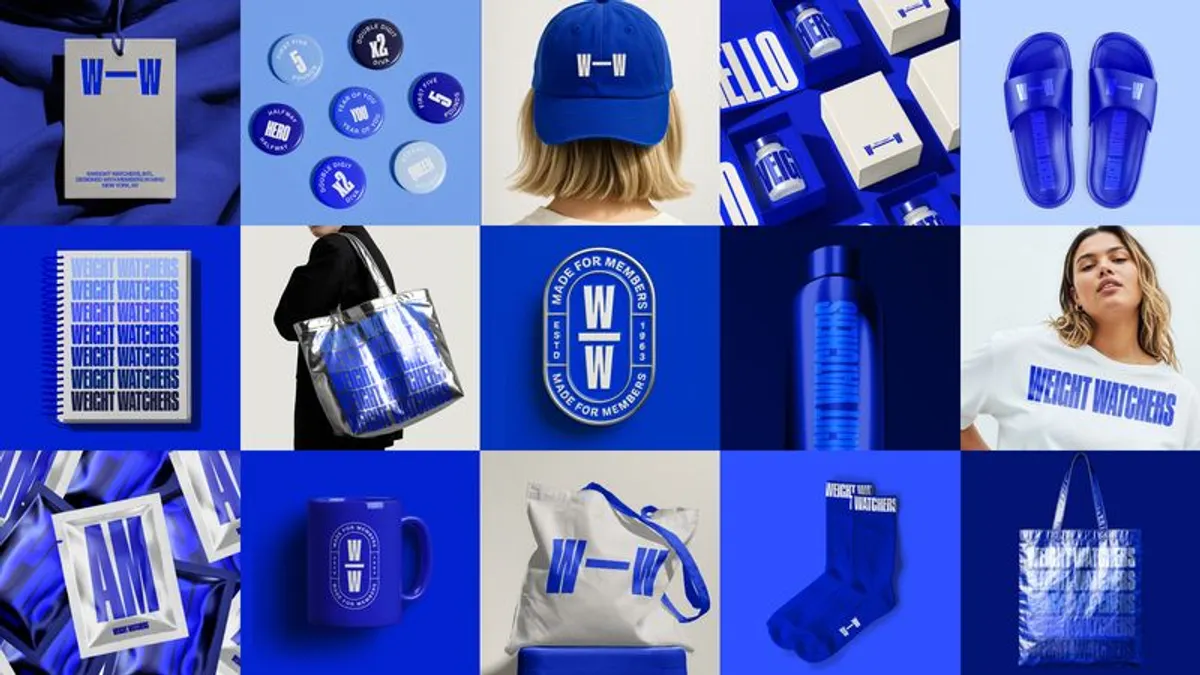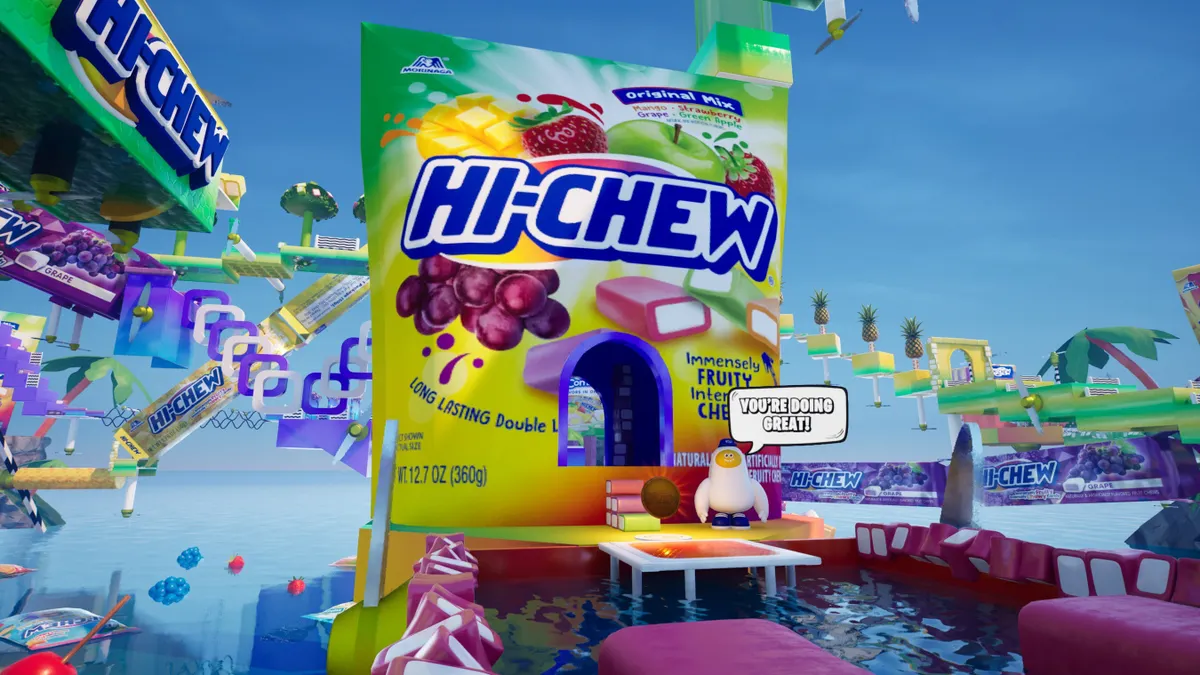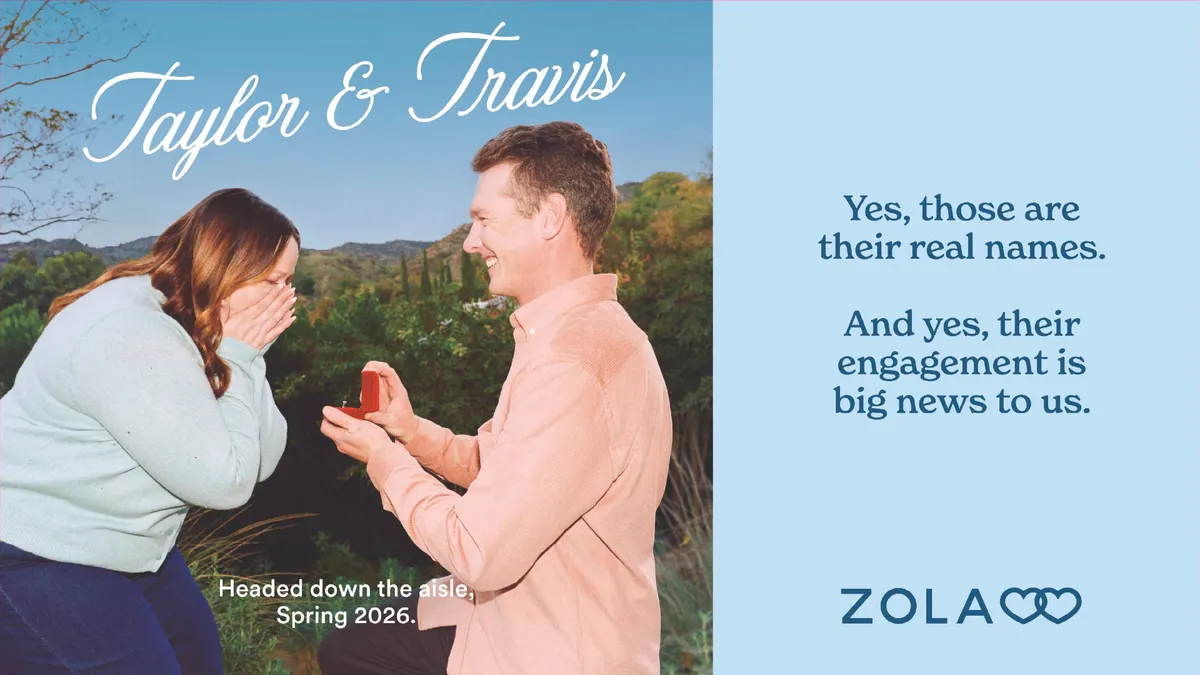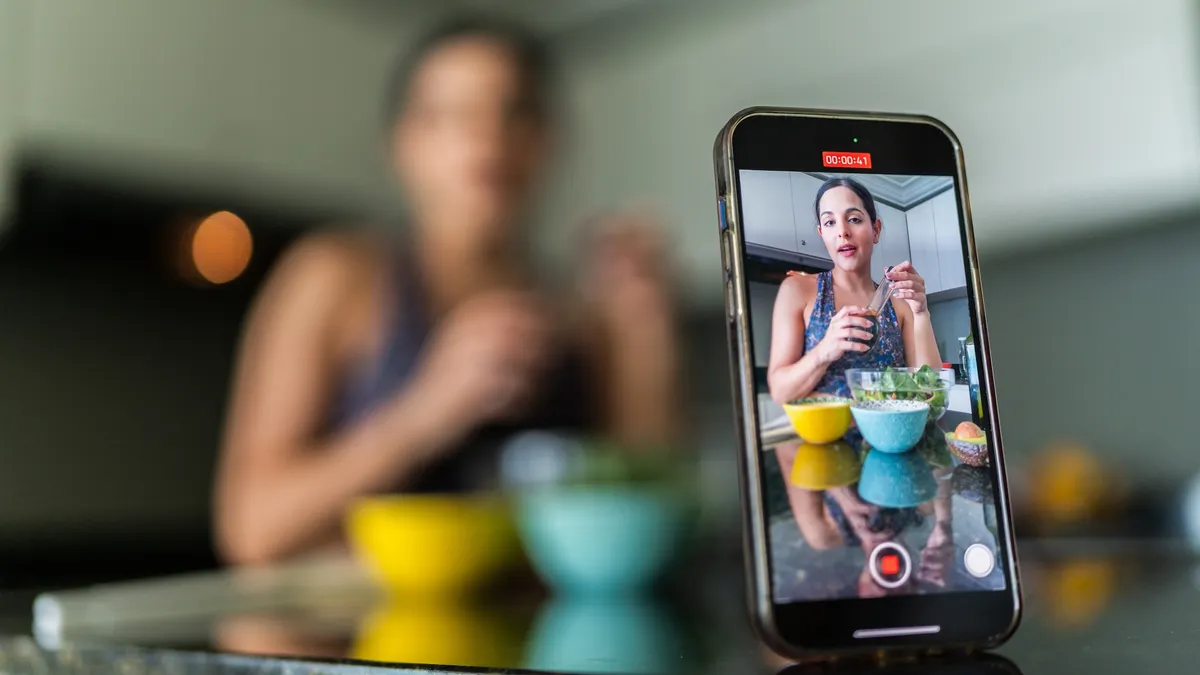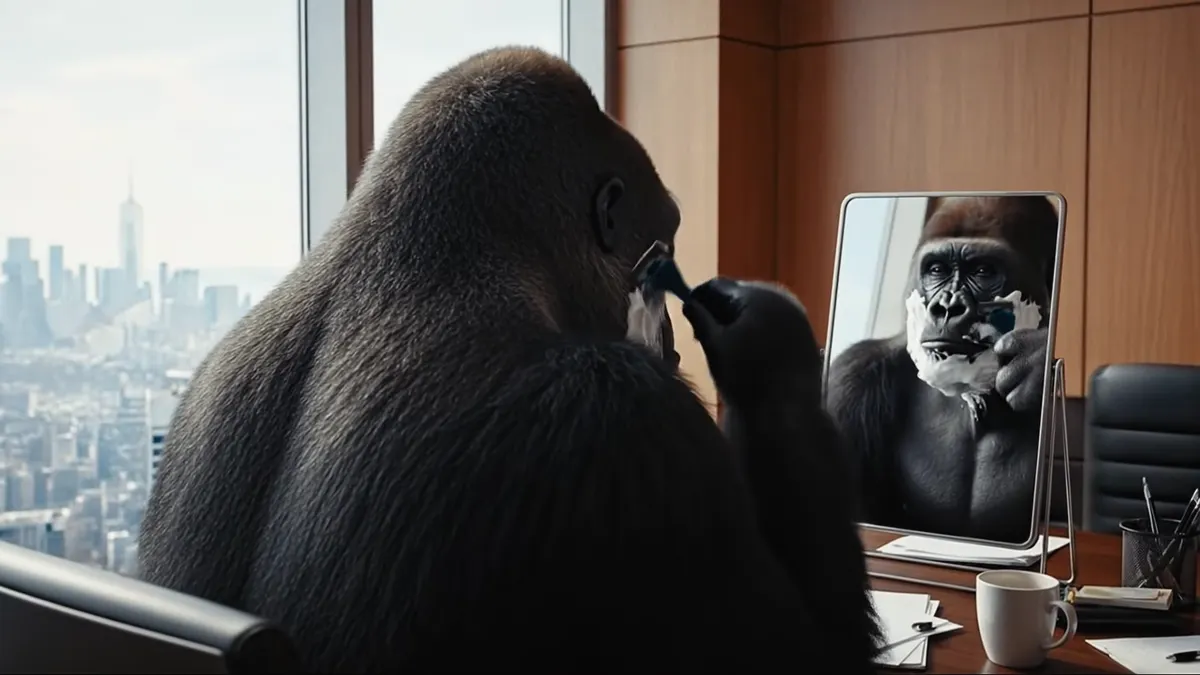Welch’s marketing has seen a gear shift in recent years, with the packaged foods marketer once known for TV spots featuring precocious tots embracing experiential activations like a rosé truck and, most recently, a pop-up speakeasy hidden inside a New York City bodega.
The millennial-friendly pivot has been driven by a desire to be associated with more than just grapes, with Welch’s undergoing a rebrand and widening its product assortment to include offerings such as canned cocktails and a line of zero-sugar juices that debuted in August. Concord, Massachusetts-based Welch’s, which is over 150 years old, is still owned by an agricultural cooperative of grape growers, but that doesn’t mean its marketing needs to feel fusty.
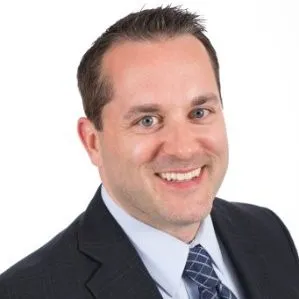
Spearheading the marketing charge is CMO Scott Utke, who joined Welch’s nearly four years ago after prior stints at CPG giants like Campbell’s and Kraft. Marketing Dive caught up with Utke at Welch’s Zero Bodega speakeasy in late January to discuss the executive’s bigger brand-building mandate, along with his evolving perspective on agencies and retail media. Following the interview, Welch’s confirmed that it is putting the creative roster for its sparkling juices portfolio under review and enacting a larger shift away from an agency-of-record model after those duties — including the rebrand — were previously handled by Fitzco.
“Our various platforms — juices, spreads and sparkling — all have different creative needs so we are making this strategic shift away from working with a single creative AOR to ensure we’re catering to the diverse needs of each,” Utke said in a follow-up email. “We are excited for the opportunity to find the right partner for our Sparkling business specifically, bringing fresh ideas and creativity to this important part of our portfolio.”
The following interview has been edited for clarity and brevity.
MARKETING DIVE: It’s been a little over a year since Welch’s rebranded. What were the strategic goals you had and what’s the progress on realizing those goals?
SCOTT UTKE: It had been a long time since we had changed anything. When we talked to consumers, they had a lot of passion for the brand, but they were rooting for it to do something different. It felt a little staid. We knew we had an opportunity in terms of repositioning but how do you bring that together visually? It hadn’t been done in the past.
The packaging work was the inception. Across all of our packs, we added the real fruit imagery, we changed the logo and we wanted to get our message about the growers on the side of the pack. That took about a year and a half. In addition, we had a new ad campaign, “Let’s Fruit Stuff Up.” The goal was to get people to think differently about Welch’s and move beyond grape. Then, we wanted to fire up the innovation engine. We did that first through new flavors, including the new passion fruit sparkling [juice].
Our biggest launch was gearing up for Welch’s Zero Sugar. This is now the biggest launch that I could find in Welch’s history in terms of investment.
What are the different levers you pull now when you think about a large media investment versus 10 or even 15 years ago?
It’s still about getting awareness and getting trial out. We do it differently than we have in the past because most of our media buy is going to be digital. The other piece of it is: How do we get consumers more engaged in the product? We did TV, but we did it through a partnership with Kelly Clarkson with some sponsored spots and product on air. We also dabbled in podcasts. We worked with Dax Shepard’s “Armchair Expert” where he did some voice-overs and ads around Zero Sugar.
There’s the Zero Bodega experience that we’re sitting in today, which is getting consumers to experience the brand first hand. It’s always been a quirky brand. We’re still leveraging that and trying to bring that to life.
I've read reports about CMO budgets declining. When you talk about your biggest campaign launch ever, do you feel like you have more resources or do you have to be thrifty?
When I came to Welch’s, we were underspending as a brand. I had to make the case to the board about what our fair share of spending should be. We agreed to what that number looked like and what that cadence would be over time. We’ve had a couple years under our belt to be able to build up what our investment is against the brand and then we’ve had to make a decision: If we’re going to have a big launch, we pull the dollars and do one thing really well instead of spreading it out into a lot of little things.
We have a pipeline of other innovation ideas that we have coming down the pike, but we have a commitment from the growers and the board that we’re going to continue to invest behind this business so that we can get the spending to a healthy level.
The doing “a lot of little things” approach seems to be more common.
There’s bifurcation from a media perspective. There’s a lot more options and a lot more ways to reach consumers, which I think actually is a good thing. It allows you to get closer to consumers and more targeted. But you’re right, when it comes to dollars, we have to be really choiceful in terms of where we’re going to place that bet and how we’re going to drive growth over time.
How much experiential marketing did the brand do in the past?
We haven’t found any good examples that have been done in the past. Last June was the first time we put our toe in the water. We did a rosé truck for Rosé Day. We started small in Boston and it did a couple things for us: One, it made us realize how much brand love we have in that area. We said, “Man, if we could just do this on a bigger scale, that would be great.” It also got people talking about not only the products we sell, but also what you can do with them. It created all of these new usage occasions.
With the Zero launch, as we were talking about what makes the most sense, a pop-up like this has a consumer angle to it but it’s also about getting closer to the media, getting closer to influencers. Since New York is a hub, this location made a ton of sense.
Our agency Superdigital and my marketing team had a lot of fun with the speakeasy. You have the traditional store on the other side that and then, on this side, we wanted a reveal, almost like “The Wizard of Oz” going to color from black and white. This brand is over 150 years old, it’s got a rich history. While we’re moving in new directions, we still want to hearken back to what people know us for.
Is there a target audience for the experiences? Is it a market that was previously underserved?
If you look at Welch’s overall, we were a little bit of an older brand. We had a bit of an older consumer. We’re looking at those next generations, whether it be millennials or Gen Z in terms of the total brand. When it comes to Zero, what we found is it’s more of a segmentation of people who are looking for no sugar. We appeal to anybody that’s looking for no sugar and wants full-flavor taste.
You mentioned Superdigital handles experiential stuff and Fitzco does creative. That’s an agency of record appointment?
It is. We use multiple agencies, but Fitzco did “Let’s Fruit Stuff Up” in terms of the big relaunch. Generally, they’re our agency of record, but we’re flexible.
The way a legacy marketer like Welch’s approaches agency relationships is pretty different today. AOR can mean a different thing.
One-hundred percent. I think in the traditional sense, AOR would be you have an agency that works on all your business and you would work with them for many years. The way we look at it now, it’s fit for purpose. Fitzco was fit for purpose as we were looking for how to relaunch the brand. What we liked about them is they understood the task and they had passion for our brand. Our next innovation, we may go in a different direction.
It might be a little selfish on our part, but we want to find the best work for the brand. We have to use our dollars very efficiently. We’re looking at the touchpoints that make the most sense. Some of those things may be through an agency and retail media networks and national media so that we can get the right reach, but then there are areas where we want to be specific. We want the flexibility to not be held to an old standard of staying with the same agencies over time but making sure to bring in the best and brightest for the job to be done.
Retail media is evolving fast and CPGs are wondering if the sophistication can keep pace with the level of investment. What do you see as the biggest challenges and opportunities?
The biggest opportunity is that a lot of the retail media networks have a direct connection with the consumer and the path to purchase is well-defined. Someone like Walmart, for example, they have a lot of reach, they’re very efficient in understanding who their consumer is and they can give us a fair amount of data to understand return on ad spend and how much is being converted to purchase.
Over time, we’re constantly trying to balance brand building opportunities with converting and creating sales. Figuring that balance out is what tends to be the challenge when it comes to retail media because it feels so conversion based. That and the incrementality.
Are you active on TikTok at all and what do you make of all this ban back-and-forth?
TikTok is not one of our biggest channels, but it’s an area — especially as we talk about showing up with the right generation — where we need to be, 100%. At the end of the day, the consumer will find a solution that either is a different version of TikTok, meaning another owner, or they’ll find another medium to enjoy the same benefits that TikTok provides today. To me, it’s more of a place in time hiccup. I don’t see it as a long-term concern.
How do you approach artificial intelligence?
We always try to carve out 10% of our budget to try things we’ve never done before. There’s already some efficiencies that we’re seeing now with AI and that’s going to continue to grow. The strategic thinking that’s required and the level of understanding of our consumer, it’s going to take some time for AI to learn the intricacies.


